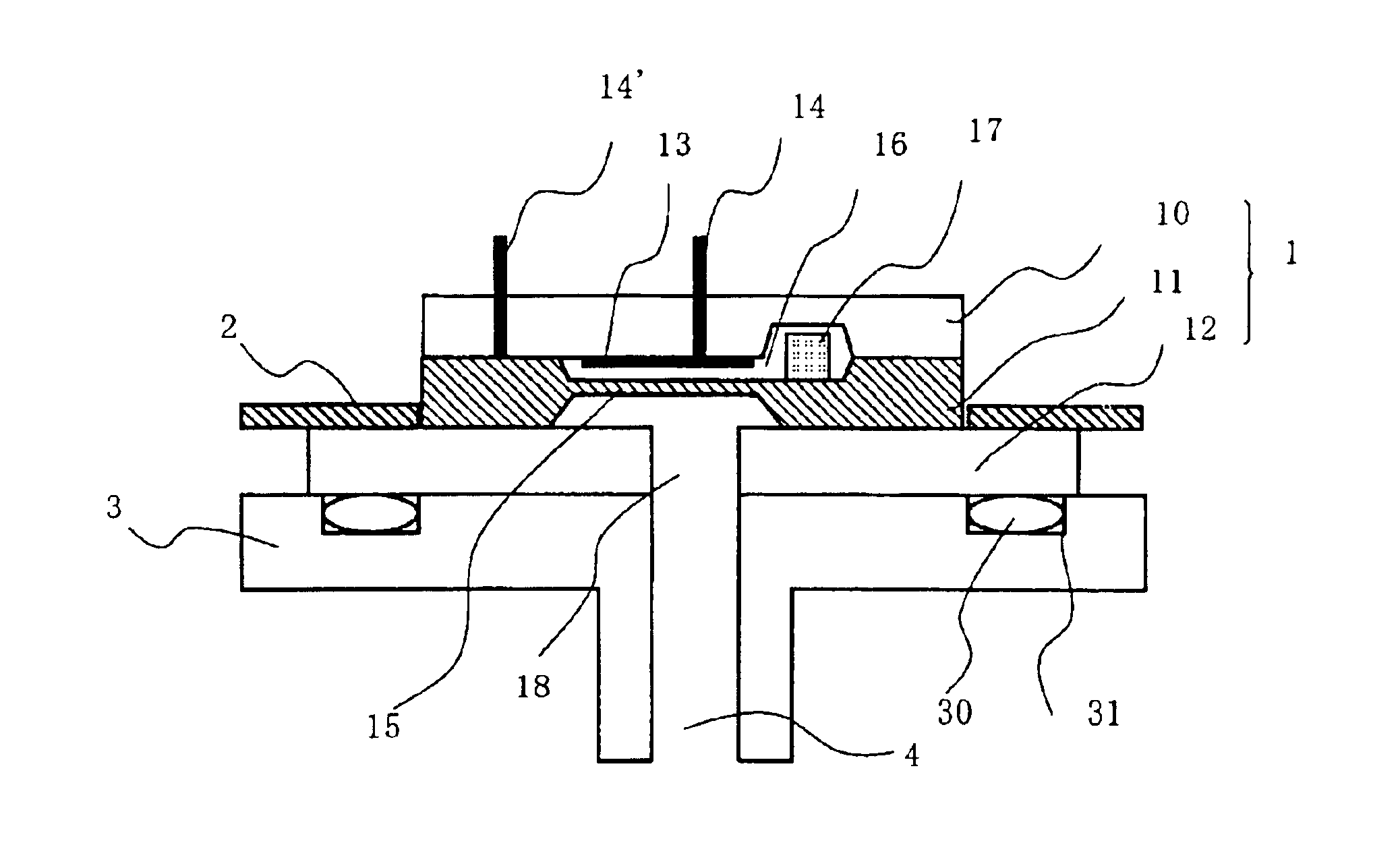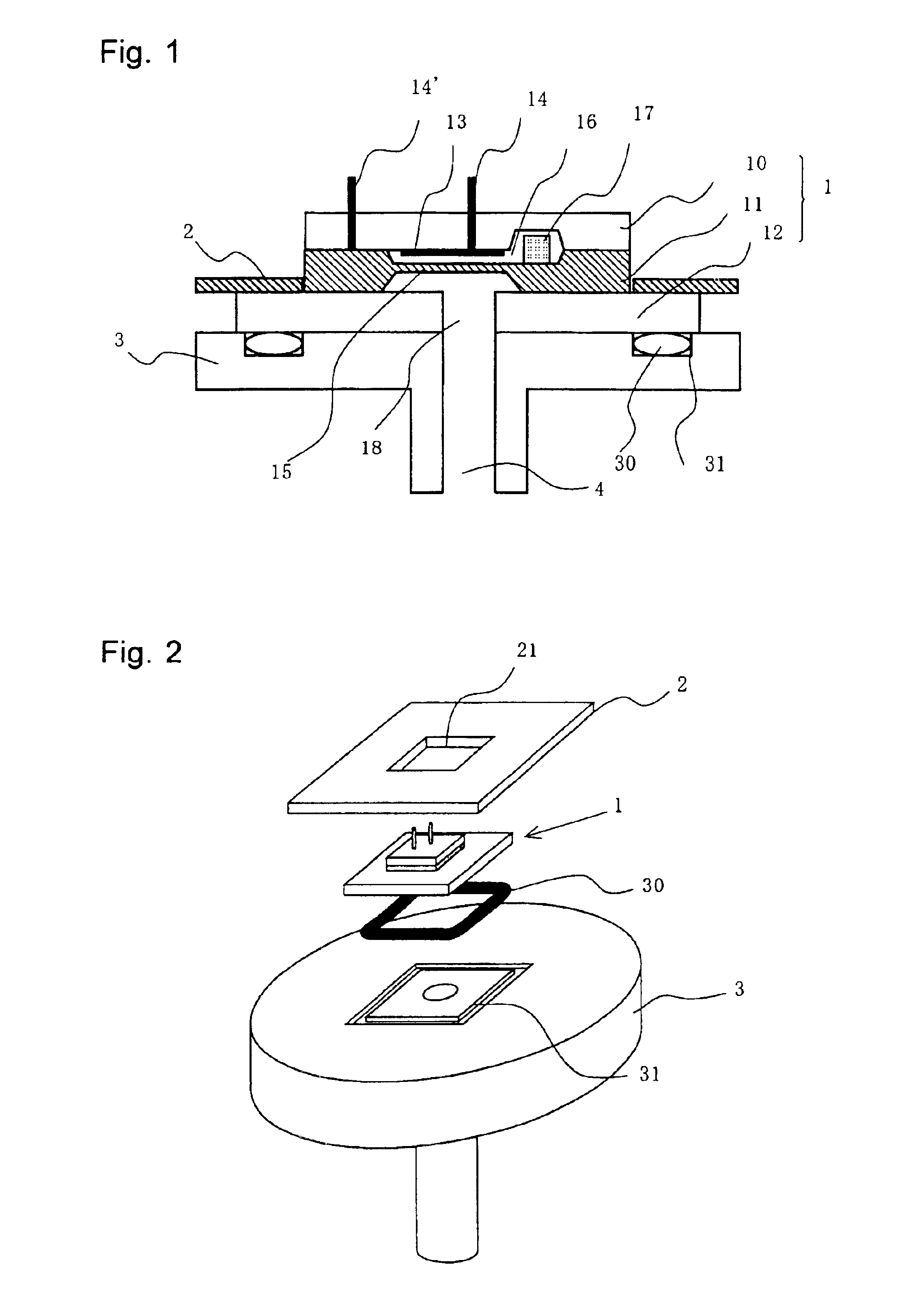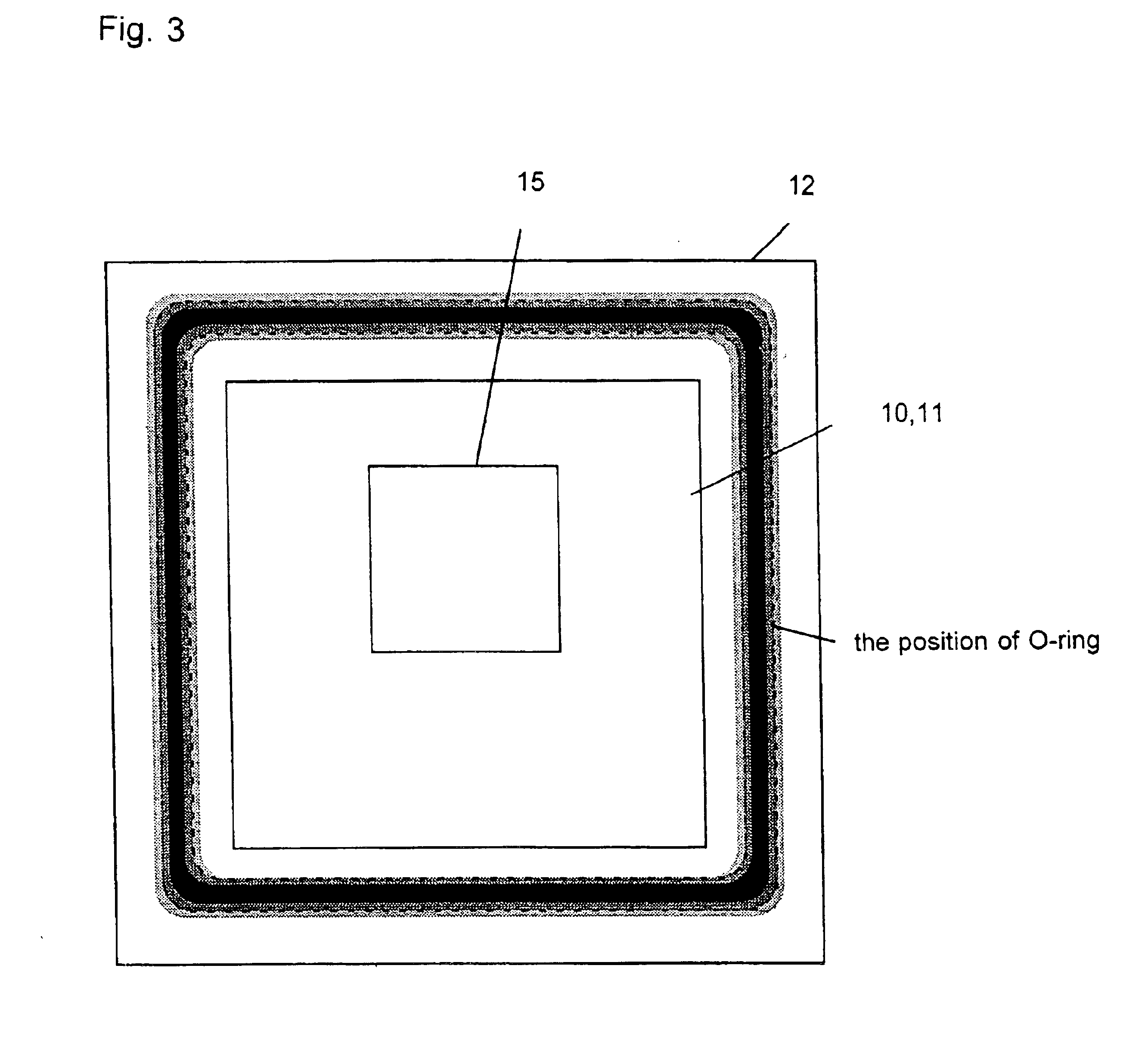Capacitive pressure sensor
a capacitive pressure sensor and capacitive technology, applied in the direction of fluid pressure measurement, fluid pressure measurement by electric/magnetic elements, instruments, etc., can solve the problems of affecting the accuracy of measurement, and causing errors in measured pressure, so as to improve the temperature characteristic of electrostatic capacitance, reduce the strain of the substrate, and improve the effect of electrostatic capacitance capacitan
- Summary
- Abstract
- Description
- Claims
- Application Information
AI Technical Summary
Benefits of technology
Problems solved by technology
Method used
Image
Examples
embodiment 1
[0031](Embodiment 1)
[0032]FIG. 1 is a schematic sectional view explaining one example of the capacitive pressure sensor on this invention, and FIG. 2 is an exploded view of the sensor.
[0033]As shown in the drawings, the pressure sensor chip of this embodiment is composed of three substrates, that is, a glass substrate 10 with a fixed electrode 13 (first substrate), a silicon substrate (for example, boron-doped silicon) 11 with a diaphragm (electrode) 15 of which thickness is several microns to dozens of microns (second substrate) and a glass substrate 12 with a pressure inlet 18 (third substrate). The multi-structure is formed by bonding these three substrates. The glass substrate 12 is larger than both the glass substrate 10 and the silicon substrate 11, and the peripheral region of glass substrate 12 is protruded from the endfaces of other substrates 10, 11.
[0034]The electrical signal of the fixed electrode 13 is taken out through lead wire 14 which runs through glass substrate 10...
embodiment 2
[0045](Embodiment 2)
[0046]Next, another example of the present invention is shown in FIG. 5.
[0047]FIG. 5 is a sectional view of a pressure sensor where a guide member 32 is equipped around the sensor chip 1. By the equipment of the guide member 32, excessive force is not exerted onto the glass substrate 12, and it helps to avoid the destruction of the glass substrate and makes the mounting operation easy and safe.
embodiment 3
[0048](Embodiment 3)
[0049]As mentioned above, the pressure sensors of Embodiments 1 and 2 reduce the strain of the sensor chip which is attributed to the mounting condition, and therefore can suppress the variation and the scatter in the electrostatic capacitance. In contrast, it was found that the output signal from these sensor chips changes with the ambient temperature although the degree of change itself is very small as compared with the conventional sensors. From the experimental investigation, it was also found that temperature dependence of electrostatic capacitance increases with the deviation from the designed capacitance when the sensor chip is mounted on the base adaptor.
[0050]This may be explained as follows. Since the press plate and the base adaptor are usually made of stainless steel whose thermal expansion coefficient is larger than those of silicon and Pyrex glass, it is likely that when the sensor chip is directly pressed and fixed by the press plate, the differen...
PUM
| Property | Measurement | Unit |
|---|---|---|
| thickness | aaaaa | aaaaa |
| degree of displacement | aaaaa | aaaaa |
| pressure | aaaaa | aaaaa |
Abstract
Description
Claims
Application Information
 Login to View More
Login to View More - R&D
- Intellectual Property
- Life Sciences
- Materials
- Tech Scout
- Unparalleled Data Quality
- Higher Quality Content
- 60% Fewer Hallucinations
Browse by: Latest US Patents, China's latest patents, Technical Efficacy Thesaurus, Application Domain, Technology Topic, Popular Technical Reports.
© 2025 PatSnap. All rights reserved.Legal|Privacy policy|Modern Slavery Act Transparency Statement|Sitemap|About US| Contact US: help@patsnap.com



